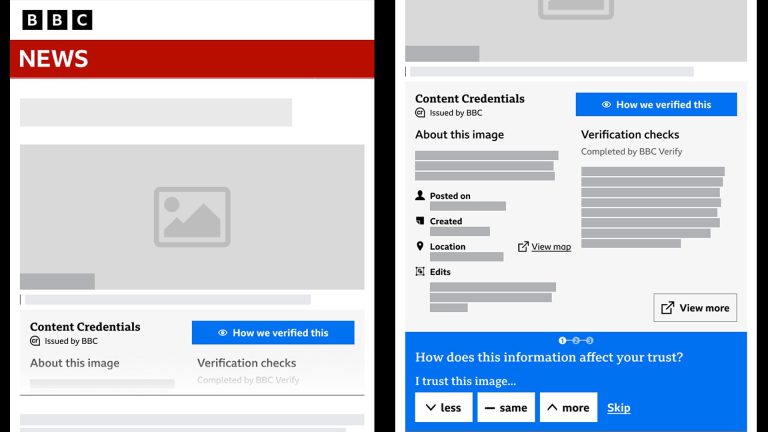BBC News has introduced a new feature called 'Content Credentials', which confirms the source of an image or video and how to verify its authenticity. It is also using new technology to embed this information into the image or video itself, helping to combat misinformation when content is shared outside the BBC.
Visitors to the BBC News website will now see a new button saying 'How we verified this' below images and videos on BBC Verification content.
Clicking this will show you what our journalists are doing to verify the authenticity of photos and video. This can include checking content against other sources, examining metadata, such as the time or date the photo was taken, comparing locations, checking that the weather is appropriate for the assumed time and location, and whether shadows are cast correctly. method, and search for other examples of the material online in case the image is taken out of context.
This is the work that BBC News teams do day in and day out, but this is the first time it has been explained to the public in this way.
This approach helps us combat misinformation, AI-generated deepfakes, and other forms of fake or manipulated content. In the future, this will also help audiences around the world distinguish between real and fake BBC content when they see what may appear to be BBC stories on external sites.
Deborah Torness, chief executive of BBC News, says: “At BBC News, we know that trust is earned. When our audiences know not just what we know, but how we know it, they feel they can trust our journalism more.
“That's why we're proud to lead the way with a brand-new feature that will let consumers know how we've verified and verified that the images we use are authentic. In a world full of deepfakes, disinformation, and distortion, this transparency is more important than ever.”
In addition to the additional information that audiences will now see, images and videos will also include a new technical standard for “content credentials” – a freely available technical system that encrypts information about image, video and audio assets. This view embeds the media with information about where it came from and how it was edited — similar to an audit trail or history — and remains with the content wherever it goes or however it is used in the future.
The standard comes from a consortium called the Coalition for Content Provenance and Authenticity, or C2PA, which was founded in 2019 by BBC Research & Development – along with other members including Adobe and Microsoft. Since BBC R&D began working with C2PA to develop this standard, many organizations have joined. Google recently became a member of the C2PA Steering Board, and Facebook and OpenAI have pledged to use the free, open standard for publishing content on their platforms.
Initially, Content Credentials will be available to audiences on the BBC News website and app, and only on certain content published by the BBC verification team. In future, the BBC will work with external publishers and social media networks to ensure Content Credentials are effectively displayed wherever news is consumed. This will help people online quickly and easily know that something actually came from the BBC, and is not a misleading piece of fake media.
lord

